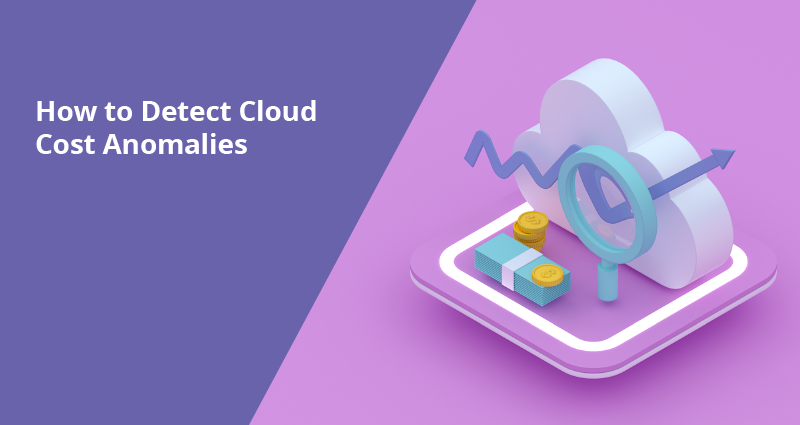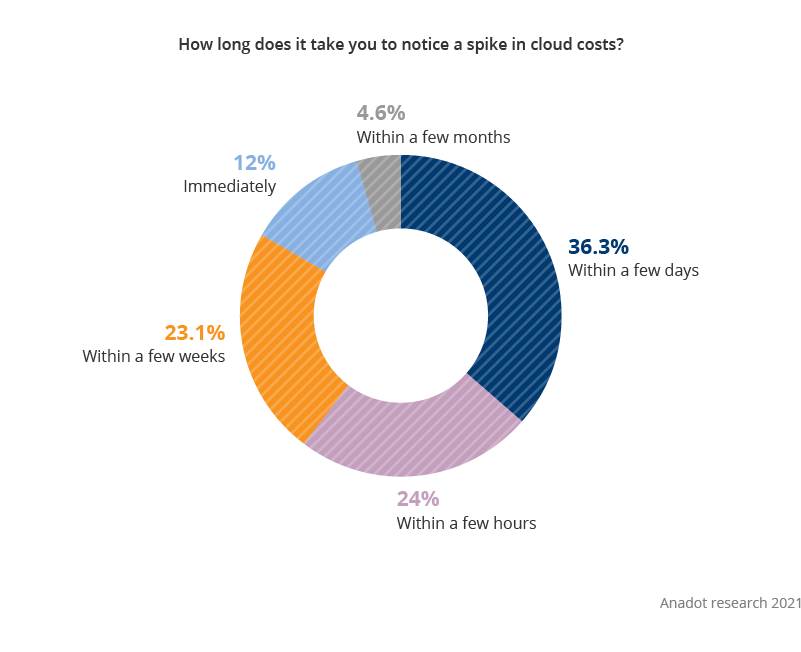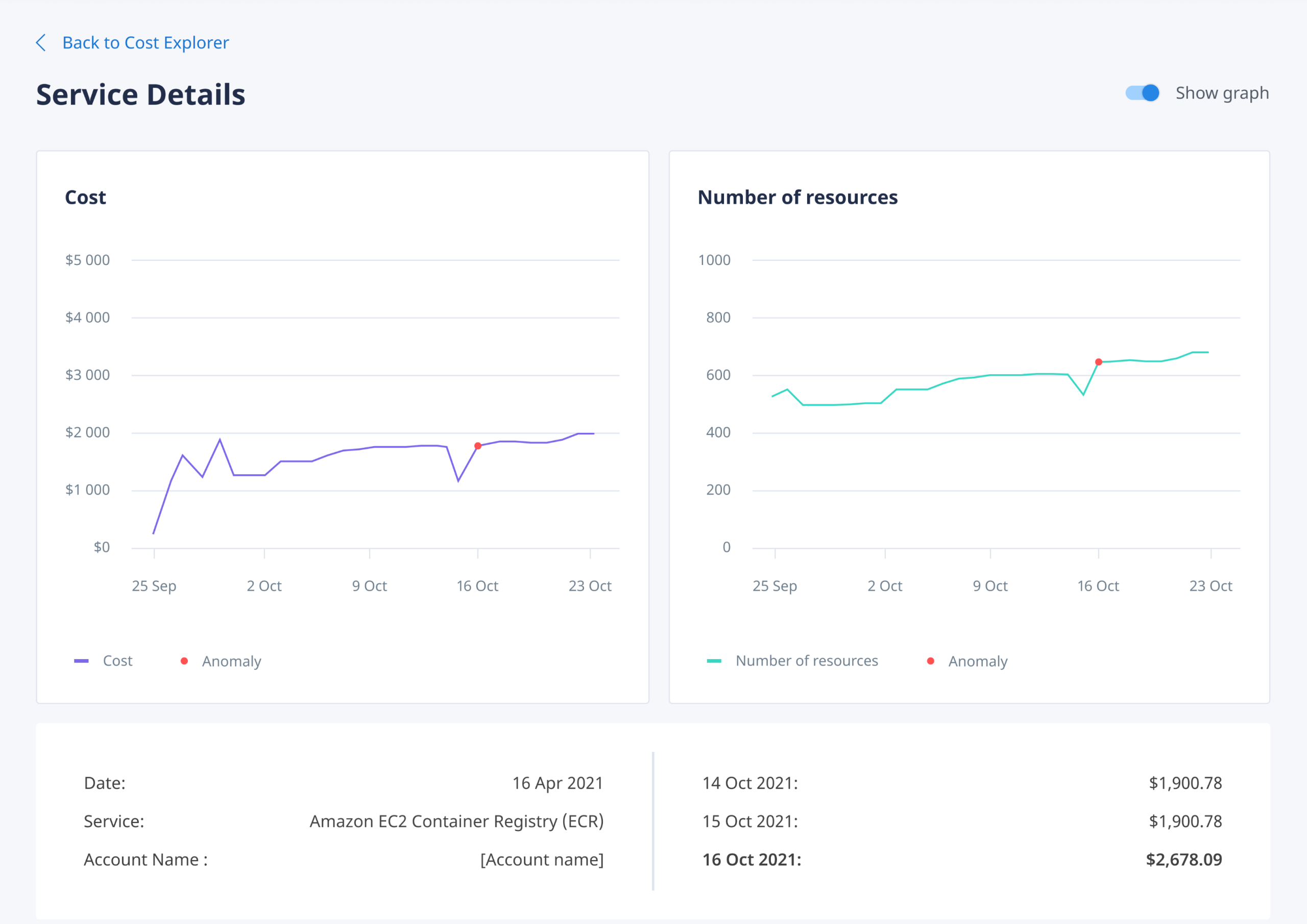How to Detect Cloud Cost Anomalies

To stay competitive, companies devoted to the cloud should regularly deal with several things all at once: track apps’ stable performance and fix critical issues; monitor utilization rates of cloud resources and check whether they match the company’s needs; as well as compare the bills for ordered and consumed resources.
Taking control of all enlisted aspects can be overwhelming for companies. In particular, cloud costs monitoring can be a real challenge because it significantly differs from identifying other organizational costs and requires extra attention.
Besides the fact that companies can scale cloud resources at any time makes it difficult to accurately predict monthly cloud expenditures and fit in within the allocated budget. It is no wonder that companies start paying attention to “unexpected” cloud spikes only after paying huge bills.
In this article, we will cover reasons why such cost anomalies happen, discover ways to detect them and talk about possible solutions to this problem.
Why do cost anomalies happen?
To start with, a cost spike or anomaly is the rapid increase of cloud resources cost for a definite period of time. The situation with skyrocketing cloud costs got worse due to the pandemics when the majority of employees had to work remotely and started deploying cloud services more actively.
The main reason why cost anomalies occur in cloud computing lies in the lack of cost control. It’s easy to lose track of cloud spendings and rather problematic to identify wasteful resources, especially for large companies and enterprises.
We referred to the survey conducted by autonomous monitoring company Anadot to get more solid ground for the research. Here is what we’ve discovered: 77% of businesses with more than $2 million in cloud costs claimed that they were surprised by the sum they’ve spent on their cloud architecture.
Why is it difficult to detect anomalies in cloud costs?
According to another Adadot research, approximately 80% of organizations cannot immediately detect spikes in cloud costs.

More than 25% said that it can take several days, weeks, or even months to notice a spike in cloud costs. As a result, organizations are getting enormous cloud bills on a monthly basis and starting to lose their market positions.
Well-known cloud vendors like AWS, GCP, and Azure provide their customers with daily cost reports and native cloud monitoring tools. Many companies start using them right away, without taking into account the other available options.
It seems logical: why do they need something besides the tools already provided by cloud vendors? The point is that in most cases, the deployment of these native tools isn’t convenient and effective. Let’s try to understand why.

First of all, when a company chooses native monitoring tools approach, there is a need for a specialist who is skilled enough to work with various services offered by different cloud providers. As the manual cost monitoring and analysis of cloud cost fluctuations is laborious and takes a lot of time, the process lasts longer, and, unfortunately, no one is perfect and human errors can’t be completely avoided. So, the risk of missing the cost spike in time is quite high.
Secondly, the detection of cost fluctuations becomes even more complicated in a multi-cloud or hybrid cloud environment. Each cloud provider has its own native monitoring tool and business owners can be confused a lot because of all the available dashboards and different data representations. Again, it’s time and effort-consuming practice to monitor all the cloud resources from different places with different metrics highlighted.
That’s why nowadays cloud management platforms have become more popular across organizations. The IT department can connect all the cloud platforms of several providers to CMP and have the whole picture of cloud assets utilization.
Furthermore, the on-boarding and off-boarding processes can be facilitated by the cloud management platform deployment. As the cost monitoring requires getting access to all the services across several cloud platforms, when employees leave, their access should be restricted. While in the case of CMP usage, the admin can easily add workers to the Workspace and can delete them with no effort, too.
One more reason to consider the cloud management platforms’ deployment is that they send real-time alerts to detect and resolve the anomaly. As was mentioned above, every second of inaction can cost the company a fortune, so CMPs usage is a sufficient way to identify the issue and get rid of it as soon as possible.
The ultimate solution – Binadox Cost Explorer
It’s difficult to control what you can’t see so an accurate cloud cost report is the aspect every company should always keep in mind.
Binadox offers the monitoring tool for every cloud model: single cloud, multi-cloud and hybrid cloud. Cost Explorer gives users a detailed consumption breakdown for all the cloud accounts within the organization’s cloud architecture.
It allows businesses to detect cost spikes and anomalies for a better understanding of possible workload and cost changes.

In the Cost Explorer section, you can choose the account and date to observe the expenses for a 3 days period, then select the service and see the detailed cost report. Also, here users can find the forecast of future expenses. So, planning the IT budget becomes more simple and fast with Binadox.

The sooner you’re aware of the problem, the better. So, as a few days of delayed detection leads to the increasing of the cloud costs approximately by 10%, Binadox sends alerts to the specified Email addresses or Slack channels immediately after a cost anomaly occurs.
All in all, business owners who are aware of all the ongoing cloud processes can make the most rational and balanced decisions on cloud management and optimization, analyze the current situation for future improvements and be in full control of utilization and costs.
Sign up to reveal cost-saving opportunities for your company.